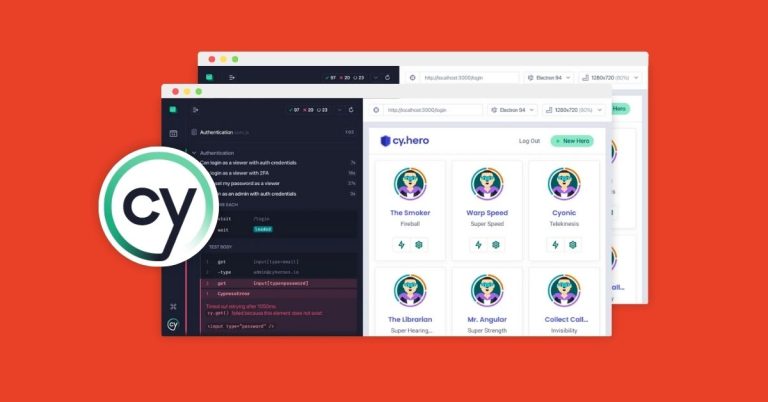
Have you heard of Cypress? It’s the framework we use for our user testing. Curious to learn more about this tool? Who better to explain it than one of our own developers! Today, Lucas, one of our back-end developers, answers our questions. So, if you want to know why and how to use Cypress, keep reading!
What is Cypress?
Lucas: Cypress is a JavaScript-based tool. It’s an automated testing framework that allows you to run end-to-end tests to verify that a website is functioning properly. In practice, it simulates the behavior of a real user.
How Can We Use Cypress?
Lucas: There are several ways to use Cypress:
- Manual testing of features and functionality. You can run tests manually to make sure everything on the site works as expected. This is especially useful for project managers, who don’t have to check everything by hand.
- Automated recurring tests (monitoring). Cypress can be set up to run tests automatically at regular intervals to monitor site health and performance. It even measures page load times and can send email alerts if problems occur.
- Tests triggered after each deployment. By running tests automatically every time a new feature is deployed, Cypress helps catch bugs introduced by new code early on—so they can be fixed quickly.
Whether it’s monitoring, deployment testing, or feature validation, we use Cypress daily to secure the quality of eCommerce projects. Curious about how these practices could benefit your business? Discover our Cypress expertise
Example of a Cypress Test with Carré Blanc
Here’s a concrete example of how we use the Cypress framework for Carré Blanc case study. With automated end-to-end tests, we can simulate real user interactions on their eCommerce site: such as browsing product pages, adding items to the cart, and completing a purchase. To ensure that everything works smoothly at every step.
What are the advantages of using this framework?
Lucas: Cypress helps detect bugs quickly and improves the reliability of deployment processes across projects.
- It’s designed to be easy to use, even for developers who are new to automated testing. Its clear, concise API makes writing tests simpler and faster.
- You can watch your tests run in real time in your browser. This makes debugging much easier and helps you understand exactly what’s happening during execution.
- Cypress offers complete automation. From installation to test execution, it can handle the entire process: saving time and reducing the risk of human error.
- Because Cypress supports JavaScript, the most widely used programming language for web development, you can write tests in the same language as your application code.
That said, there are a few downsides. Cypress tests need to be maintained whenever changes are made to our eCommerce sites. While this requires some extra time, it’s still cost-effective because we don’t have to manually retest the entire site after each deployment. Plus, it helps us catch more complex bugs.
Do you know another tool besides Cypress?
An alternative is Selenium, which supports a wide range of browsers including Chrome, Firefox, Safari, Internet Explorer, and Opera. It can also test web applications across different operating systems such as Windows, macOS, and Linux. This ensures your eCommerce site works for all customers, regardless of their browser or OS. Selenium also supports multi-page testing, which is helpful for certain site architectures. Unlike Cypress, Selenium is compatible with several programming languages, including Java, C#, Python, Ruby, and JavaScript, so you can choose the one that best suits your team.
However, Selenium can be harder to set up and use, and test execution is generally slower since it interacts with the browser more like a human user would.
In short, Cypress is easier to use and faster for testing, which is why we rely on it for all our projects. Selenium would be a good alternative if we needed to test multi-page sites or specific browsers.
Conclusion
Cypress has proven to be an essential ally in ensuring the quality and reliability of modern web applications. From detecting bugs early to streamlining deployment processes, it gives development teams the confidence to deliver smoother, faster, and more secure digital experiences. While there are limitations (as with any testing framework) its simplicity, speed, and developer-friendly approach make it a strong choice for most web projects.
At Sutunam, we use Cypress daily to support our clients in building robust, scalable eCommerce platforms and digital solutions. If you’d like to explore how Cypress testing could strengthen your own project, get in touch with our team.

